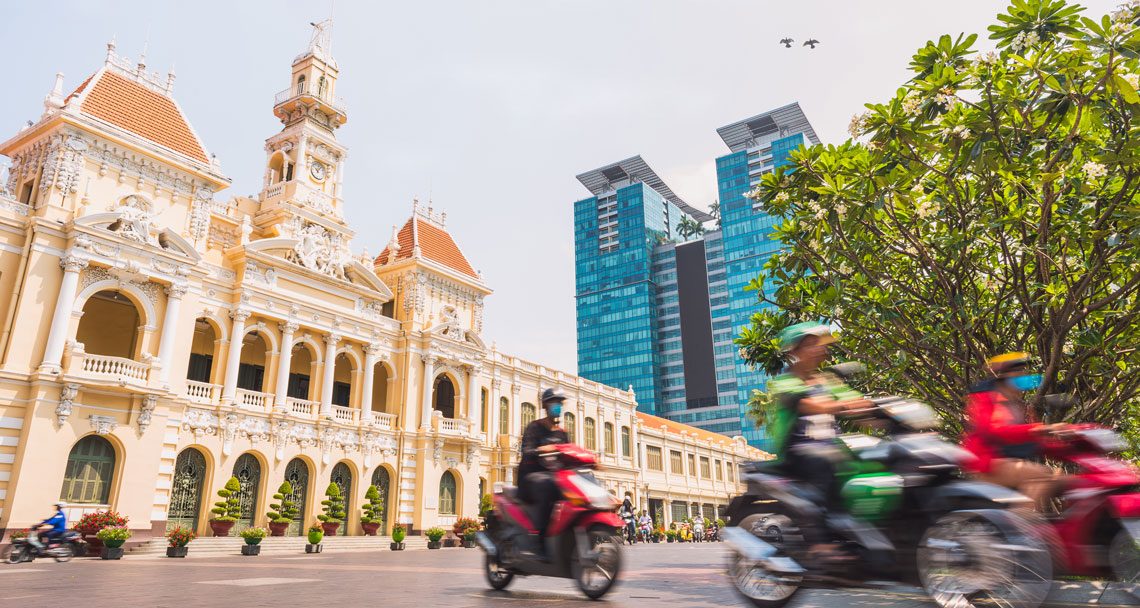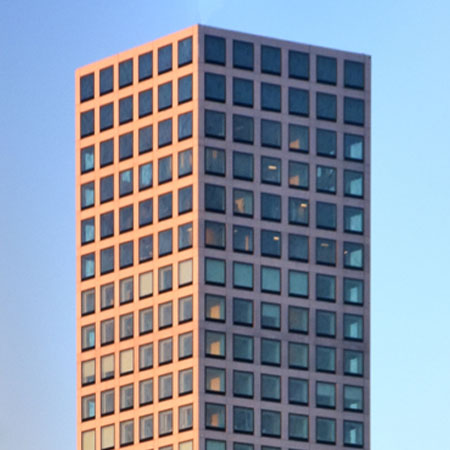Asia-Pacific’s investable real estate universe is fast growing and extremely diverse. Differing cycles are creating different pockets of risk and opportunity, while the emergence of new asset classes is providing investors with a much broader range of options and strategies.
Vietnam appears to be a future bright spot (Ho Chi Minh City, above), with strong economic growth and a youthful demographic profile. But, investable assets remain scarce. Administrative hurdles continue as anti-corruption measures bite, in turn reducing liquidity and delaying development progress. However, over the medium term, this will establish sound governance and a better business environment, benefiting investors.
India, whose population is forecast to overtake China’s in the next five years, offers longer-term opportunity. The government has taken measures to boost the economy by reducing corporate taxes and re-capitalising banks. The central bank lowered the benchmark interest rate five times during 2019. These measures will drive occupier demand for traditional asset classes such as offices, but there are also real opportunities in alternatives. Co-living is one such example, supported by India’s huge millennial population.
Australia has experienced the worst and earliest bush fires in its history. Although still ongoing, the current damage to businesses and property is expected to have a near-term negative impact on GDP, mainly from a fall in farm production, private investment and tourism, albeit somewhat offset by government aid and unprecedented donations. Financial markets have also increased their expectation of an interest rate cut, but these are already at historic lows and there are doubts that they are still positively impacting the economy.
At a regional level, uncertainties still linger against a backdrop of geopolitical tensions, US trade relations and slowing economic growth. This has meant the emergence of a degree of downside risk to some countries in the region in 2020, particularly export-orientated economies, as investors remain more inclined to invest in real estate markets viewed as better insulated from such risks.
In the near term, looser monetary conditions will continue to support real estate markets as external and domestic headwinds mount. Core investors will continue to seek opportunities in the office sector, in spite of low yields, focused on major cities across the region.
Yields across most Asia-Pacific markets seem to have bottomed out. As a result, investors are searching for higher-yielding assets. Alternative asset classes, such as self-storage, data centres and senior housing, are benefiting.
2020 Asia-Pac tips
Core
1. Grade A offices in core locations in leading Asia-Pac cities, including first-tier Chinese cities, Singapore, Tokyo, Mumbai and Sydney.
2. Grade A and B regional Japanese offices, taking advantage of rising rents.
Core plus
1. Logistics space close to regional economic hubs. In China, land use constraints push supply and new development of larger facilities to third/fourth-tier cities, including Jiaxing, Kunshan and Huizhou, that are neighbouring first/second-tier cities. Fulfilment centres increasingly blended with retail offering especially for FMCG deliveries. In Vietnam, multinational corporations are taking long-term positions amid strong domestic growth.
2. Outer CBD locations for office development, such as North Sydney.
3. Retail space in China with management, upgrade or tenant reconfiguration potential.
Value add
1. Conversion of underperforming retail assets to alternative uses in first tier Chinese cities, in core locations but also on the fringe of submarkets.
2. B grade office repositions in Ho Chi Minh City, to take advantage of rental growth and yield compression.
3. Distressed residential developments in Sydney and Melbourne. A leverage play on residential pricing, population growth and tight lending conditions for developers.
Opportunistic
1. Co-living and student housing in India, supported by the country’s large student and young professional populations.
2. Hospitality brands in Vietnam. Opportunity for strong brands to build loyalty for local hospitality, targeting the country’s 80 million domestic tourists (set against 15 million international tourists).
3. Underperforming hotels in Japan for repositioning. The recent tourist boom has resulted in some market saturation and hotel pricing has softened.
Alternative
1. Data centres in China, India and Japan adjacent to key business hubs.
2. Non-performing residential loan portfolios or offices in China, weighted toward regional hubs such as the Greater Bay Area.
3. Medical and healthcare assets to serve Vietnam’s burgeoning middle class.
Source: Savills Research




